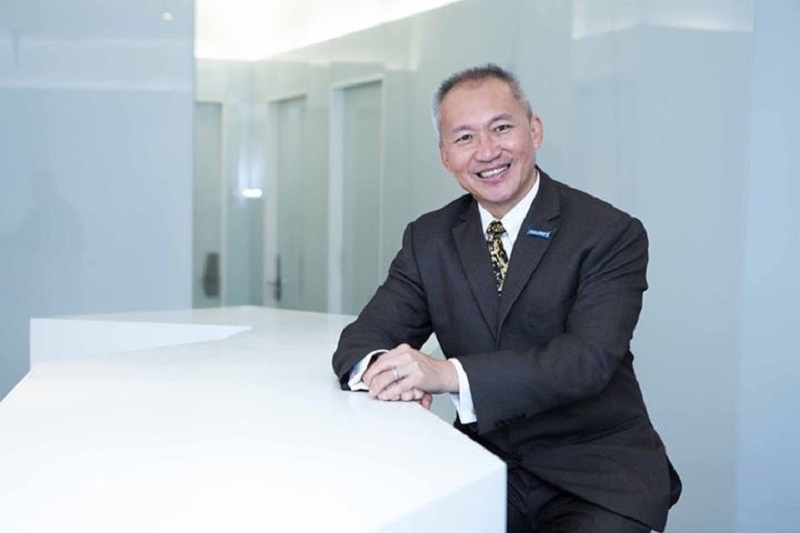
With a career spanning 34 years, Daniel Ng has an amazing, panoramic view of the economic landscape in the digital era. His journey, which encompasses experiences in varied sectors and several countries, has afforded him a unique and comprehensive understanding of digital economy.
OpenGov Asia recently spent time with him, to get valuable insights, trends and predictions on the global digital economy scenario.
History
The conversation began with a history of his career, which started with him graduating with a software engineering course from a university in Canada, before heading back to his hometown in Malaysia.
During his presentation of a system he developed for banks, his boss was amazed at Daniel’s ability to speak, to facilitate understanding with listeners and keep his audience genuinely engaged.
The following Monday after that specific roadshow, he was offered a job in marketing and the rest, as they say, is history.
Learning everything about marketing from the ground up and living all over the region such as Malaysia, Hong Kong, Singapore and Beijing helped him gain a deeper understanding of the latest buzzword at the time – Digital Economy.
Daniel describes the state of Digital Economy from when he was starting years ago, “Not many things were called digital 30 years ago. It was very much a phase of computers and hardware.”
Internet was just coming into the world back then, amassing an approximately 15 Gigabyte (GB) per month of global Internet traffic.
Moreover, an average physical computer boasted of 10 Megabyte (MB) hard disk storage and ran on a 486 processor and floppy disks were the rage!
At the time, this infrastructure was very restraining; networks were confined to running on the Local Area Network (LAN), batch processing was scheduled and email access was very limited.
Nobody had even thought of mobile devices or wireless networks.
The available storage on computers back then would definitely cower at the available hundreds of gigabytes, even terabytes (TB), of smartphone storage today.
Daresay, Digital Economy, then, was very much word processing, with spreadsheets and presentation merely making a debut.
The 3 pillars of a Digital Economy
Over the years, uptake and rollout of technology has varied considerably across sectors and regions. Moreover, countries in the region differ in the pace of their digital economic growth based on their vision, resources and capacity for transformation.
Some countries have regions and towns that remain to be disconnected from the internet, while other countries, like Singapore, are already a smart nation.
Daniel credits this difference to three important criteria of a Digital Economy, which are infrastructure, policies and talent.
Criteria of a Digital Economy – Infrastructure
Infrastructure covers bandwidth, storage and processing. Applications need storage for housing, bandwidth for sharing, and processors for speed of execution.
As a genuine, established Smart Nation, Singapore is a leader and benchmark in the region. Most countries seek to emulate Singapore and look to it for expertise and guidance.
Business part, Singapore provides a gigabit of internet speed in every home, which gives the country more opportunities to advance, whether in research, in communication and even in provision of services.
This is an example of how infrastructure boosts a country’s digital economy. An evolving infrastructure, like the advent of the 5G technology, opens unlimited opportunities to leapfrog.
A smart nation uses all of its technological advantages and platforms to serve its people. However, infrastructure is not the only piece that makes up a smart nation.
It has come to the point wherein much of the focus is on what the technology can deliver versus what the people need the technology to deliver.
Daniel reiterated, “Technology plays a role in a smart nation, but it is not the only thing that makes it smart. A digital economy and a smart nation have to be accompanied by the right attitude.”
A big portion of digital economies and smart nations tend to focus on the “what” and the “how”, such as what technology should be used and how to apply that technology, instead of why use that technology.
China, for instance, was perceived to be a ‘backward’ technology country some 20 years ago.
But, it focused on putting a comprehensive plan that answers the “why” of a nation, which led it to take a leadership stance, years later.
Technology should evolve and revolve around this “why”.
Focusing on the reason why a certain technology is being used to improve on a problem had allowed China to leapfrog from the mainframe era into the network era, without the burden of migration.
Criteria of a Digital Economy – Policies
Knowing what is placed on top of these infrastructures is essential to give it control and security. This is where policies come in.
Progressive policies that promote development and transformation while ensuring safety are vital since the digital world has risks of being an exposed world.
Policies that tackle issues on data security, cyber defence, ethical practise and usage of information, are a few of the essential ones.
Having these policies, plus a mindset of thinking beyond one’s own shores, highlight the fact that the digital economy cannot exist in isolation and that nations cannot do it alone.
Criteria of a Digital Economy – Talent
Of the three criteria, talent is always the hardest as technology changes very quickly.
A person’s programming knowledge may be considered obsolete within a few years as newer languages and programmes are birthed. Constant learning, upskilling and awareness are required.
Nations, through their policies and initiatives, can address this by ensuring local education and training programmes for citizens, which should be their first pool of talent.
By providing these, the human resources will benefit in a two-fold manner.
One, human resources will be equipped with the technical knowledge of coding and design.
Two, they can leverage on technology, in an effective and efficient manner, for their social and living comfort while feeling secured doing so.
Measures of Success
Similar to evolution, there are phases to achieving a sound digital economy, to which different metrics apply.
The first would be the adoption of technology through relevant education and awareness.
This phase will provide answers to the “why” of utilising technology as compared to simply answering the “what” and the “how”.
After that, the second phase will be the impact it brings to the economy, in terms of the growth it provided as a new or revamped engine to power the nation’s business.
The next phase would be how it invents new economies, which may be borderless and human-less in its implementations.
This will then be measured in terms of its efficiency and effectiveness as well as its security against cyberattacks.
According to Daniel, the ultimate measurement, however, of any technology, particularly of Digital Economy, is the impact it brings to the lives of the people.
Not all things should be measured by how faster they can connect, but how deep the connections are.
Daniel ended the interview with a reminder that for a Digital Economy to be successful, “We should humanise technology and not mechanise people.”




















